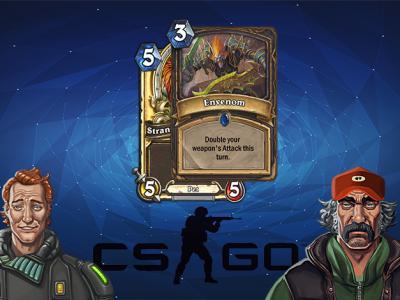It’s the 2nd day of 2018, and I opened my PokerStars Client and stare blurry-eyed at the Power Up lobby. I have the problem that nearly everyone experiences when they go back to work after the Holiday Season. My brain is still in holiday mode. The good news, apart from some emails, catching up on some social media and tidying up a few odds and ends, my job yesterday was to play Power Up and get better.
After some super difficult maths, I worked out that to make a profit at the $1 games I need to win more than 37% of the games I play. So just over 1 game in 3. Each game awards $2.76 to the winner after the rake to PokerStars, so we’re not talking life changing money, at least not yet.
What I’m discovering is, my Power Up games don’t seem to be quick. I won my 1st game, but it took me 20 minutes to do so! Good value in the entertainment stakes, but not helpful in me getting enough games in! My plan was to play 20 games. I ran out of time. I had set aside 2 hours for playing these games, based upon my experience playing Spin & Gos. I was not prepared for each game to run for so long. It’s a combination of slow play from my opponents, and the blinds changing based on the number of hands rather than time. I got 11 games in, and that took me just under 2 and a quarter hours. I was only playing one table to let me record the session in HD, but that seems really slow to me. I worked out how long each game too on average, and it was 12 minutes, 11 seconds. That average also includes a game that lasted a single hand (spoiler, I didn’t win that one).
While my win percentage was around 45%, showing a decent profit, it felt worse because of the time it took me to get there. I’m no stranger to long sessions, I’ve played multi-table tournaments in sessions lasting 12+ hours before. However, most of those sessions felt like I was fully engaged all the time. Power Up has a lot of down time during the games, while you wait for your opponents to make up their mind on how to act. This is probably a combination of inexperience in the player pool with poker itself, and the new strategies that are still being developed to take into consideration the Power Up mechanics.
This slow pace may also be one of the contributing factors to the less than stellar reaction to the launch of Power Up from the established poker community. Spin & Gos also had a bad first reaction from the conservative poker community, but they are now accepted as a part of the poker landscape. One of the reasons for this is Spin & Gos were able to show a profit for players. Unlike Power Up, players can make a reasonable amount of buy ins per hour, even single tabling Spin & Gos. Now I have more experience playing Power Up, I think this may be one of the biggest hurdles to over come in gaining acceptance for the Power Up game in the poker community. I don’t think this is going to impact more casual players, who are more interested in entertainment than making an hourly rate playing poker. However, even though they are not the key target demographic for Power Up, having a core of traditional poker players in the community is likely to be a major factor in establishing the reputation of the game. In my opinion, PokerStars needs to look at the length of these games in order to attract that core poker player along with my other concerns that I mentioned in my previous article.
I’m off to get more coffee, and get back to the tables so I can get to 20 games, and get a real sample size to work out how effective my current Power Up strategy is.
I’ll report back in my next article, and let you know what I’ve discovered.











